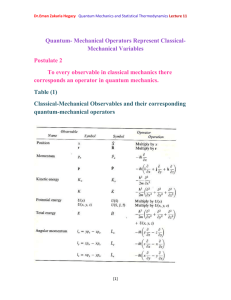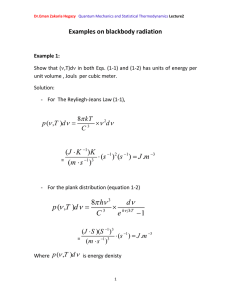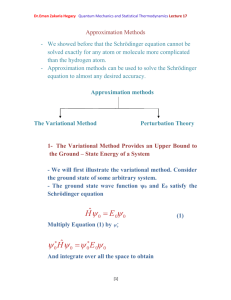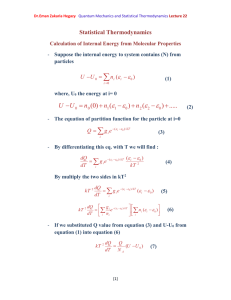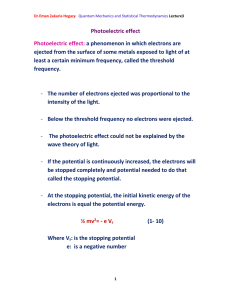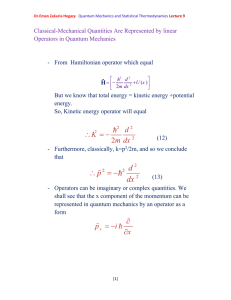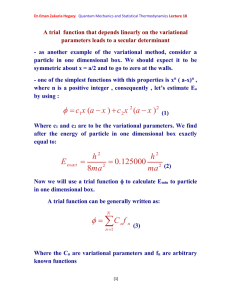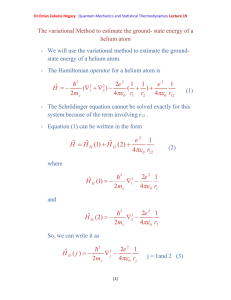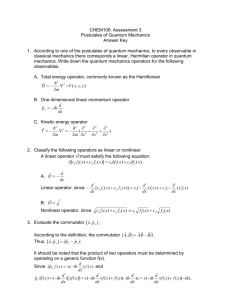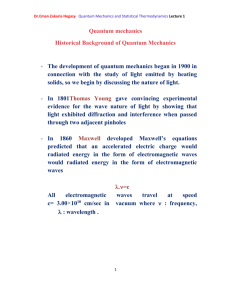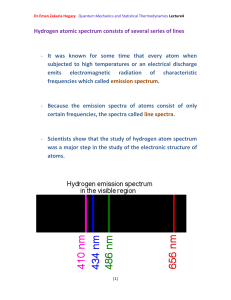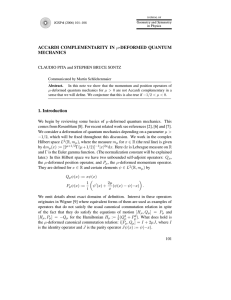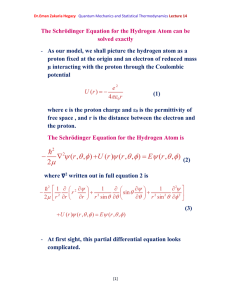Document 15399205
advertisement
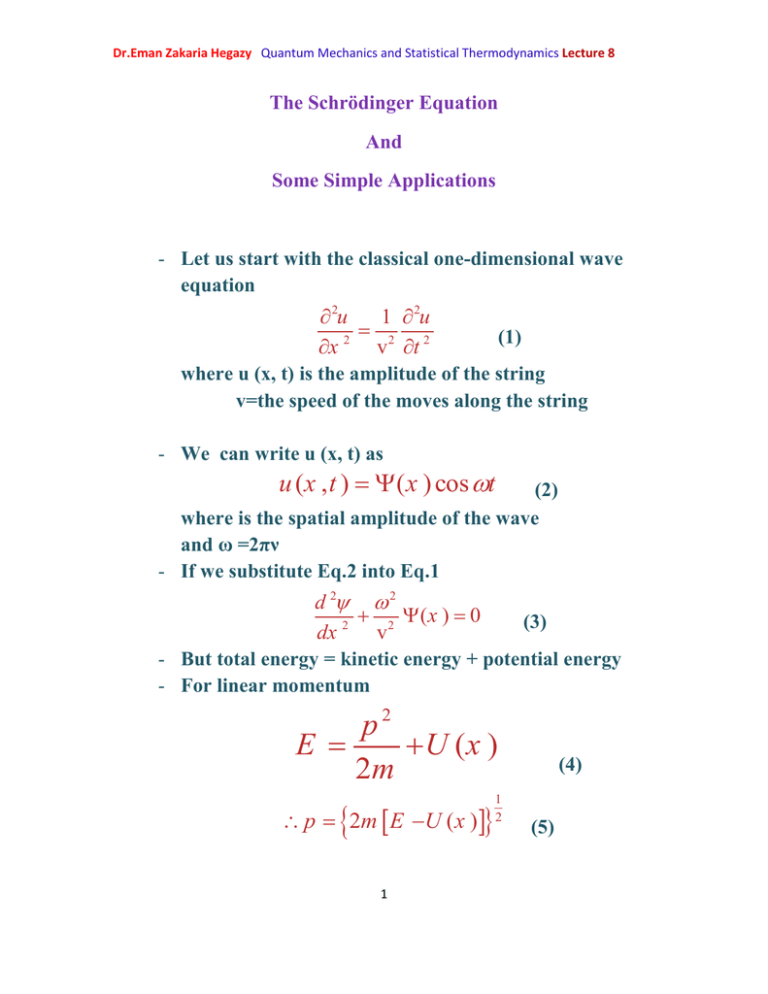
Dr.Eman Zakaria Hegazy Quantum Mechanics and Statistical Thermodynamics Lecture 8 The Schrödinger Equation And Some Simple Applications - Let us start with the classical one-dimensional wave equation 2u 1 2u x 2 v2 t 2 (1) where u (x, t) is the amplitude of the string v=the speed of the moves along the string - We can write u (x, t) as u (x , t ) (x ) cos t (2) where is the spatial amplitude of the wave and ω =2πν - If we substitute Eq.2 into Eq.1 d 2 2 (x ) 0 (3) dx 2 v 2 - But total energy = kinetic energy + potential energy - For linear momentum p2 E U (x ) 2m p 2m E U (x ) 1 1 2 (4) (5) Dr.Eman Zakaria Hegazy Quantum Mechanics and Statistical Thermodynamics Lecture 8 h - From de Broglie formula p h h p 2m E U (x ) 1/2 (6) v 2 and Putting all this together, we have 4 2 2 4 2 2m E U (x ) 2 2 v2 v2 2 Substituting this into Eq. 3 we find d 2 2m 2 [E U (x )] (x ) 0 2 dx (7) This equation can be rewritten in the form d 2 E (x ) U (x ) (x ) 2m dx 2 2 (8) The above equation can represents what is called Schrödinger equation 2 Dr.Eman Zakaria Hegazy Quantum Mechanics and Statistical Thermodynamics Lecture 8 The Schrödinger Equation can be Formulated as an Eigen value problem An Operator: is a symbol that tells you to do something to whatever follows the symbol. For example, we can consider dy/dx to be the d/dx operator operating on the function y(x). √,and y all this make as operators We shall usually denote an operator by capital letter g(x)=  f(x) to indicate that the operator  operates on f(x) to give a new function g(x). - Let us go back to equation 8 we can write it 2 d2 E (x ) U ( x ) (x ) (9) 2 2m dx - If we denote the operator in brackets by Ĥ, then the equation (9) is Ĥ ψ(x) = E ψ(x) (10) This formula the Schrödinger equation as an eigen value problem. Operator Ĥ is called Hamiltonian operator. 2 d2 U ( x ) 2 Ĥ (11) 2m dx The energy is an eigenvalue of the Hamiltonian operator. 3 Dr.Eman Zakaria Hegazy Quantum Mechanics and Statistical Thermodynamics Lecture 8 Some examples on operator Example1: Perform the following operations. d2 A 2 dx (a) Â(2x) , (b) Â(x2) , A d2 d 2 3 2 dx dx (c) Â(xy3) , A y Solution: (a) d2 Â(2x)= 2 (2x ) 0 dx 2 d2 2 )= 2 x 2 d x 2 3x 2 2 4x 3x 2 dx dx (b) Â(x (c) Â(xy3)= 4 xy 3 3xy 2 y
